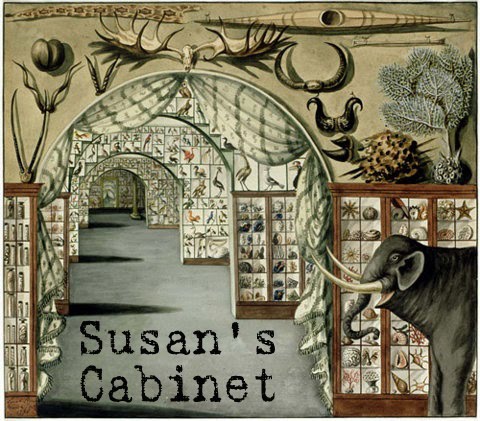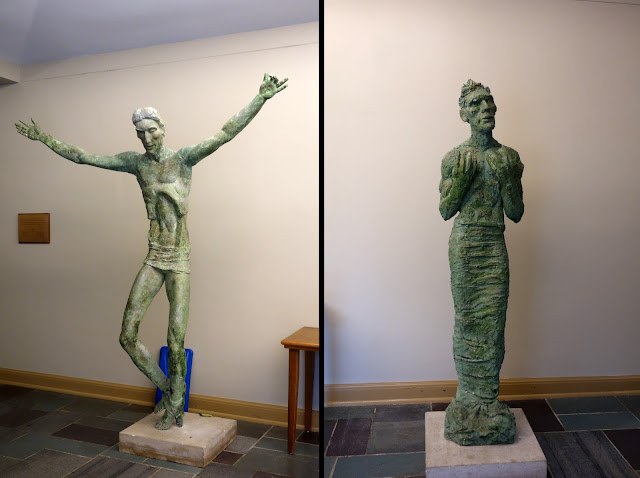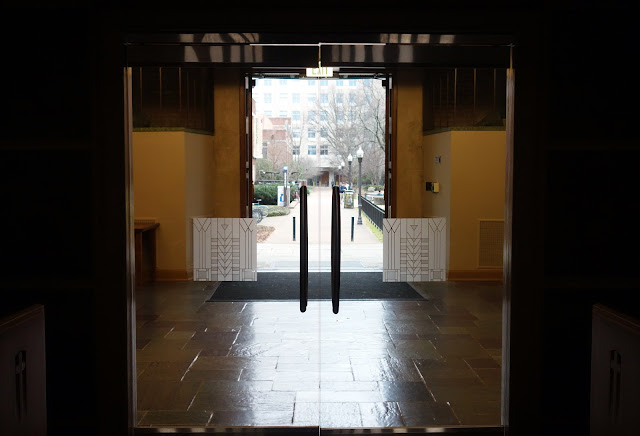Benton Chapel was built in
1959 as the main chapel for Vanderbilt University in Nashville. The university's Divinity School wanted “a
lofty chapel in contemporary style.”
They hired the local architectural firm of Brush, Hutchison & Gwinn to design and construct the chapel, as well as other new buildings for the Divinity and Law Schools.
Albert Hutchison (1909-1986)
was a graduate of Vanderbilt and had been a member of the faculty of the
Vanderbilt School of Engineering for several years before serving in WWII. He
joined the architectural engineering firm (which later became known as Hutchison
& Associates) in 1950. He died at the age of 75 and donated his body to the
Vanderbilt University School of Medicine.
Robert Harmon (1915-1999) of
Emil Frei, Inc., in St Louis, and a pioneer of the modern stained-glass
movement, designed the stained-glass windows: over three hundred small windows
and the tall “Word of God” window above the entry doors.
The pulpit is adorned with carved and gilded symbols of the four evangelists.
A quintessential Mid-Century terrazzo staircase leads to the chapel’s balcony.
Many ironwork grills,
incorporating Christian iconography, decorate the exterior of the chapel.
Although it incorporates
Christian decorations and iconography, the chapel is nondenominational and is
used by many religious traditions. Harvie Branscomb, Vanderbilt’s Chancellor at
the time the chapel was established, believed “that preaching in a nondenominational
context would really bring quality thought to religious issues and engage the
Vanderbilt community in discussion of these important matters.” Harvie
Branscomb died at the age of 103 in 1998. His, and his wife's, ashes are
inurned in the side wall of the chapel to the left of the pulpit.
So often, in the U.S., churches and synagogues are locked up outside of religious services' hours. This chapel is one of the pleasant exceptions. Benton Chapel remains unlocked for visitors.



















































